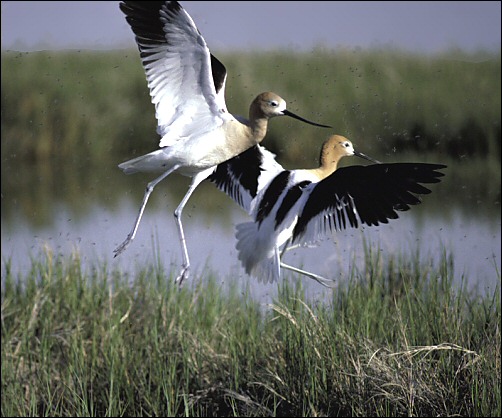
You've all seen cartoons where a bird is socked on the snout or flies headlong into a wall. In the aftermath, the bird's bill is folded like an accordion. Now, I don't know of any actual bird that looks like that, but we do have one around our waterways that kind of looks like it ran into something. Many birds have beaks that curve downward, but the American Avocet somehow managed to get one that looks like it was pulling out of a dive just a bit too late. Moreover, this up-curved bill isn't some petite, modest nub of a nose, but a real snozzle some inches long! Even the scientific name latched onto this: Recurvirostra americana. The generic portion translates as up-turned, or recurved, beak or nose region.
This moderately-sized, long-legged bird normally occurs on the shores
of lakes and rivers throughout our desert region in summer and during migration. The
combination of stilted legs, crash-landing bill, and handsome black and white plumage
with orange-tan head and neck during the breeding season is a sight to remember.

Contributor: Arthur H. Harris, Laboratory for Environmental Biology, Centennial Museum, University of Texas at El Paso.
Desert Diary is a joint production of the Centennial Museum and KTEP National Public Radio at the University of Texas at El Paso.

American Avocets (Recurvirostra americana), Bear River Migratory Bird Refuge. Photograph courtesy of the U. S. Fish and Wildlife Service.